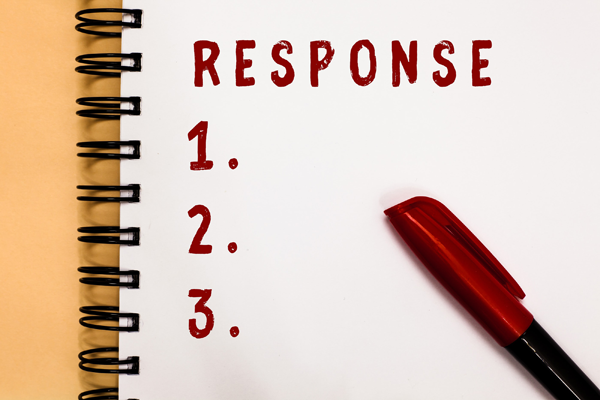It’s the kind of news we never want to hear—a tragedy has struck. Unfortunately, in our world today, the news media daily reports the reality of violence, accidents, and death, and our schools are not immune.
A few years ago, I sat in a large audience in Arizona listening to the inspiring and heartbreaking story of Alissa Parker. Her daughter, Emilie, was one of twenty young students fatally shot at Sandy Hook Elementary. One of the images that still remains in my mind is the moment she described after finally leaving the area where she was waiting for news about her daughter. Exhausted and beside herself, she made her way past throngs of media to her car. What a long walk it must have been. As I listened, the struggle between free press and privacy for those involved in such crises was all too real.
As a school administrator, there are three important mantles incorporated into your role in your school community:
- You are a leader.
- You are a communicator.
- You are a protector
When disaster strikes at school, be it a shooting, suicide, fatal injury of a student or staff member, or accident, these mantles weigh heavy. As you respond to tragedy and its aftermath, it is important that you—as a leader, communicator, and protector—have prepared yourself in advance to respond to the known as well as the unknown in the crisis.
While we typically avoid dwelling on tragedy, remember the old proverb that says, “An ounce of prevention is worth a pound of cure.” Take time now to examine how you are doing in the preparation and prevention department and perhaps what you could do better.
How you choose to respond to tragic events involving your school community will determine whether your community views the school as a focus of healing and comfort or one of anger and blame. Schools must not be passive when it comes to responding to crises involving their school community.
In this blog, we will look at specific principles to help you, as a leader and communicator, prepare for an unthinkable tragedy at your school.
Four Components of a Successful School Crisis Communication Plan
What is your current protocol and communication plan as a school administrator for communicating with your school community and the media? We hope it includes the following.

- Reach out immediately to families directly involved in the tragedy and maintain open lines of communication.
When multiple students at your school are directly involved, it may be more complicated to honor the diverse wishes of each family. In such cases, it may be beneficial for able family representatives to consider the families’ various needs and help find common solutions. - Consider the diverse audiences you will be facing, and adjust your message accordingly.
Grieving staff, students, and families should take precedence over all other audiences. Others from outside of your school community will grieve and want to help in some way, so give them ways to be involved without overstepping. Don’t forget your role as protector, and protect those under your leadership. - Use prudence when balancing the news media demands with those of students, families, and staff.
The media will undoubtedly do all it can to get the story. School administrators who have faced tragedy on a large scale would likely agree that you will have more control over the way the story is covered if you cooperate rather than fight the media. The National Association of School Psychologists (NASP) offers valuable advice on dealing with the media in the midst of crisis. - Give place for your school community to find purpose and comfort.
Healing is an important step after tragedy. Find ways to create physical or living memorials, depending on the circumstance. Planting a tree, establishing a scholarship, or producing a special program (for example, suicide prevention initiatives, head injury prevention, mental health programs, etc.) are some of the ways you can help your school community through the healing process.
Guiding Principles of School Crisis Communication
It’s impossible to conceive of every possible scenario your school community may face in the future. As schools around the country and the world share their stories of what they learned in the midst and aftermath of their tragedies, we will likely see common threads of guiding principles that help establish the school as a source of comfort and open communication.
In Phi Delta Kappan, a professional journal for educators, two school psychologists worked with a professor of psychology to share their insights into how schools heal after a tragedy. The article asserts that it is crucial to be prepared before a crisis occurs and states, “It is not a question of if, but when, a school will be required to respond to a crisis.”

The article advises the following principles for effective school crisis communication:
- Schools must be proactive, not reactive, in responding to tragedies.
Knee-jerk responses are unprofessional and do not contribute to a strong school public relations, nor a healthy school brand. By having a school crisis communication plan as part of your emergency plan, you will help foster trust within your school community. - The way you respond immediately to a crisis directly influences long-term recovery.
Many of our schools focus on encouraging students to make the decision to be drug-free long before they are offered drugs or alcohol. Why? Because we know having a plan in advance makes the hard decisions easier later on. In the midst of a crisis, there is little time to hem and haw about school public relations, the media’s place, support services, etc. The time to decide where you will stand in a crisis must be set long before it arrives at your door or in your hallways. - Offering mental health support to the school community requires a balance of community and school professionals.
When Thurston High School in Oregon experienced a mass shooting in 1998, the community rallied around the school offering support while being cautious about replacing school professionals who knew the students and would be there over the long-term. The community offered the school support from various community agencies such as churches, the Red Cross, the police, and county mental health professionals. The school district worked with over 200 counselors. This event prompted the community to support the hiring of the first school resource officers on high school campuses in that area of the state. - Schools must be prepared to meet varying reactions within the school community—not just for the short-term but also for the long-term following a crisis.
A crisis team created at Thurston High School daily debriefed and evaluated the situation. School administrators took steps to reach out to students’ families, notifying them that their student may have seen a traumatic event and that the school was offering crisis responders to help. Voice messages were left and letters were mailed that included information from staff members with facts about the event and a detailed plan of offered support at the school for the coming days. Certain procedures added to an effective, smooth return to school activities. Students and staff were evaluated and supported following the crisis.
Recognizing that traumatic stress may adversely affect academic performance, behavior, and mental health over time, the crisis team sought to recognize the needs of individual students and offer the proper support where needed. It’s clear that some students and staff members may develop severe challenges like post-traumatic stress disorder and require longer-term help. To help proactively combat future issues, schools are open to providing counseling and mental health services on campus with the expectation that staff and students will take advantage of their services. Schools in this situation can help by offering staff and students ways to utilize healthy coping strategies. Creating a database to monitor student and staff needs may be beneficial. Offering parent resources online or in person builds school public relations. - Sensitively seek for a “new normal,” rather than foster a strict “move on; get over it” mentality.
It can be comforting to return to the regular school routine. There can be a delicate balance, however, between sticking with the routine and making accommodations following a tragedy. School health professionals can help find this balance. Thanks to grant funding, Thurston High was able to hire two counselors trained in trauma support for three years.
Memorials, living or physical, can support recovery and progress towards a “new normal.” Adversely, memorials can divide a community. Consequently, schools should be proactive in establishing guidelines on memorials (note: this link will download the PDF “Memorials: Special Considerations when Memorializing an Incident” provided by NASP), taking into consideration the situation involving the death as well as other sensitive matters.
Will You Be Prepared If Tragedy Strikes?
Alissa Parker co-founded Safe and Sound Schools, whose mission is “to support school crisis prevention, response, and recovery, and to protect every school, every student, every day.” The organization strives to provide research-based education, resources, and tools to support schools in their efforts to provide safe learning environments for the youth of this country. Safe and Sound Schools offers workshops, trainings, conferences with experts to bring all stakeholders together to improve school safety.
Will your school be ready to bravely and compassionately face the community as well as take steps to appropriately give place for the media? It will take a brave school administrator to courageously and carefully stand as the face of the school during the difficult times. If you do not take this route, however, what will it cost you and your school?
Your school community needs you. In difficult times, they will look to you and expect a response. Will they find in you a school administrator who is not afraid to talk about the hard topics and communicate compassionately to the various audiences of staff, students, and families?
Emily Boyle, School Website Content Specialist








